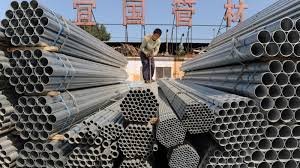Globaltraded.com – The U.S. economy has continued to outpace market expectations, demonstrating resilience despite challenging conditions. Forecasts indicate a 2% GDP growth for the current year, confounding earlier predictions of a slowdown to 0.6% in 2024. The post-pandemic business cycle has managed to evade the specter of a recession, although analysts caution that gravity will eventually take its toll.
The Federal Reserve’s extensive interest rate hikes have not deterred the U.S. economy, which experienced a resurgence in the third quarter of this year. This unexpected rebound can be attributed to several factors. Consumers are drawing upon their excess savings, benefiting from tight labor markets. Meanwhile, businesses have seized opportunities presented by supply chain reshoring and landmark industrial policy initiatives to bolster capital investments in advanced manufacturing technologies.
The private sector has also played a role in maintaining economic momentum, having secured long-term borrowing at historically low interest rates. This measure provides some insulation from the impact of tighter financing conditions. Furthermore, the gradual normalization of supply chain bottlenecks has relieved cost pressures. Although labor shortages have resulted in wage increases, labor market dynamics and inflation trends have been adjusting steadily, mitigating their impact on overall demand.
Nonetheless, the economic outlook is not without challenges. The final phase of curbing inflation is expected to be the most difficult, with a projected final rate hike this year followed by an anticipated shift to rate cuts in mid-2024. The extended period of higher interest rates is likely to hinder economic activity and credit growth. Additionally, refinancing concerns have led to a decline in housing supply, affecting affordability and supporting new residential construction. Similar affordability concerns extend to other durable goods, such as new vehicles.
Fiscal policies are expected to shift towards tighter budgets as stimulus measures wane. Factors like the resumption of student loan repayments, the depletion of excess savings, and a softening labor market may temper consumer demand in the near future. While the economic picture remains positive, the key risk centers on the speed of disinflation and its potential implications for monetary policy, financial stability, and demand growth. Commodity price fluctuations, financial market volatility, possible government shutdowns, the 2024 elections, and geopolitical tensions are among the critical risks that warrant close monitoring.
As the U.S. economy continues to navigate this challenging landscape, observers are keenly watching for developments that will shape its path forward.


























































